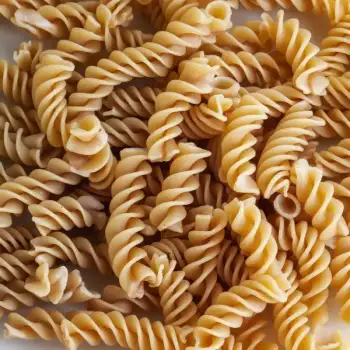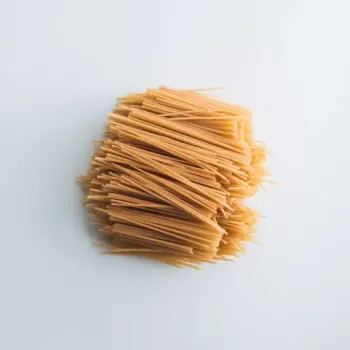Rotini and Fusilli are two types of Italian pasta with spiral shapes ideal for holding sauces. Rotini has tighter spirals, while Fusilli features a looser and larger twist, making them suitable for different types of dishes from pasta salads to bakes and soups.

Rotini is a corkscrew-shaped pasta that originated in Italy. Its tight spirals are perfect for holding onto sauces and finely chopped ingredients, making every bite flavorful.

Fusilli, often confused with rotini, is a type of Italian pasta twisted into a spring-like shape. Its grooves are adept at trapping rich and hearty sauces, ensuring a perfect sauce-to-pasta ratio.
Although visually similar, Rotini typically has tighter spirals and a smaller pitch between each twist. Fusilli, on the other hand, has a slightly larger and looser spiral, which makes it better for thicker, chunkier sauces. The texture of the two can also differ, with rotini often being slightly denser due to its compact spirals, while fusilli may offer a more tender bite.

Your ultimate Recipe Box, Meal Planner, and Cooking Class all in one
Rotini is excellent for pasta salads. Its shape holds onto light dressings and small ingredients like diced vegetables and herbs. Try it in an Italian pasta salad with a vinaigrette dressing, fresh tomatoes, cucumbers, and mozzarella. Fusilli's longer spirals are ideal for thicker dressings in pasta salads. They work well with creamy sauces, larger vegetable pieces, and cheese chunks. A Greek pasta salad with fusilli, feta cheese, olives, and a creamy dressing is a perfect match.
Rotini's tight spirals are perfect for baked pasta dishes where the sauce is key. They work well in a cheesy baked rotini dish with marinara sauce and a blend of melted cheeses on top, ensuring that the sauce and cheese are captured within the spirals. Fusilli's thicker twists stand up well in the high heat of baking. They are great for baked fusilli casseroles with robust meat sauces or vegetable bakes, where the pasta's grooves catch chunky ingredients.
Rotini can be a delightful addition to lighter broths and minestrone soups, as it will not overpower the soup's other ingredients while still providing a satisfying chew. Fusilli's sturdy structure makes it a good choice for heartier stews and thick soups, where it can maintain its shape and texture amidst robust flavors and ingredients.
Rotini and fusilli are very similar in their nutritional profiles, providing a good source of carbohydrates and protein with minimal fat. Their nutritional values may vary slightly depending on the brand or if they are made from whole wheat or alternative flours.
| Nutrient | Rotini ( per Serving ) | Fusilli ( per Serving ) |
|---|---|---|
| Fat | 1g | 1g |
| Fiber | 2g | 2g |
| Sodium | 0mg | 0mg |
| Protein | 8g | 8g |
| Calories | 220 | 220 |
| Carbohydrates | 43g | 43g |
Yes, you can use rotini instead of fusilli in a pasta bake. The difference in texture and sauce absorption may be noticeable but should not significantly impact the overall dish.
Cooking times can vary slightly between different pasta shapes and brands. Always refer to the package instructions for the best results, as the cooking time will depend on the exact size and thickness of the pasta.
Both pastas can be used in cold pasta salads. Rotini may be better for lighter dressings, while fusilli may be preferred for thicker, creamier dressings.
Yes, both rotini and fusilli are typically made from the same basic ingredients: semolina or durum wheat flour and water. However, variations such as whole wheat or gluten-free versions may have different ingredients.
To prevent sticking, stir the pasta occasionally while it cooks, and rinse it with cold water after draining if you're not serving it immediately. Adding a little olive oil can also help keep the pasta separate.